Art World
Interview: How Artist Olafur Eliasson Is Trying to Change the World With His Cookbook
The artist wants to change the world through art—and food.

The artist wants to change the world through art—and food.

Lorena Muñoz-Alonso

Food, and the rituals that go with it, have been a recurrent theme in contemporary art for decades, but with his newly-published cookbook The Kitchen, renowned artist Olafur Eliasson has taken matters to the next level, and submerged himself in the culinary art proper.
The handsome Phaidon publication gathers over 100 sophisticated vegetarian recipes that have been developed (and are cooked daily) by a team of professionals at Eliasson’s Berlin studio to cater for his staff of 100 plus, including architects, archivists, administrators, art historians, and students.
Eliasson understands cooking as an “act of caring for others, […] a gesture of generosity that functions as a social glue.” This approach fits seamlessly with his many artistic endeavors, in which a keen pursuit of experiential awakening and attention to detail—even in works of monumental scale—collide with a host of socially-engaged and environmental concerns.
If this makes him sound like a hopeless idealist, it’s because he probably is. artnet News met with Eliasson in London—where he stopped by to promote two books: The Kitchen, and Unspoken Spaces, a new monograph gathering 20 years of his artistic practice, published by Thames & Hudson—and in person, he is as earnest and utopian as one would expect.
And while Eliasson might be an art world darling—able to seduce the institutions, the critics, and the general public in equal measure—refreshingly, his success hasn’t translated into cynicism or entitlement.
Soft-spoken and self-effacing, yet enthusiastic, the artist was especially keen to show me his Little Sun Charge, the latest product of his social venture to bring solar energy to the 1.1 billion people that don’t have access to electricity, which he wanted to make sure artnet News readers hear about.
Ordering a cappuccino with a mellow accent that betrays his Icelandic-Danish origins, the artist sat down to talk.
Is The Kitchen an art project?
Well, it has become a project. It started out 15 years ago by having to make lunch at the studio, which interrupted the flow of the work each day (although it was only 10–15 people at the time) and didn’t make for really good food …
Gradually, a friend of mine who is a professional cook, came to cook for us, and it turned out to be healthier, tastier, and less disruptive. In time, lunch became a creative space in the studio to get together and discuss ideas, a space where the hierarchies were leveled out. As the studio grew bigger, it also became a space for people working in different departments to meet.
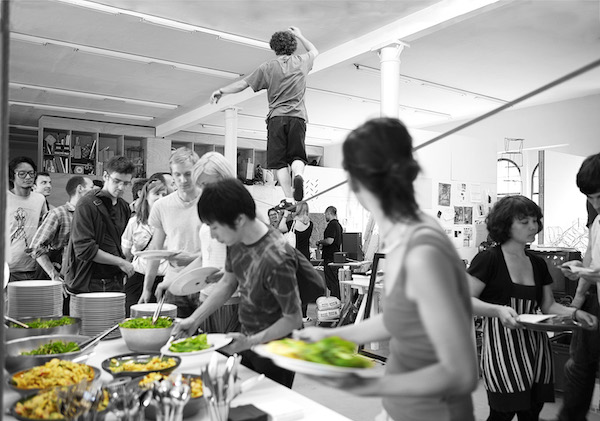
Space Activism Marathon, 2010. Photo: María del Pilar García Ayensa/Studio Olafur Eliasson © Institut für Raumexperimente, UdK Berlin.
Why vegetarian food?
Over the years, the cooking became more ambitious, but we have always been very conscious about the money spent in feeding at the studio, which means we all eat vegetarian because it is healthy, good for the climate, and also more affordable. We occasionally serve Icelandic lamb, although it’s been a while now… The vegetarian, fresh approach has taken over the studio and we are all very pleased. I am in the slow process of becoming a vegetarian myself, although I am not there quite yet…
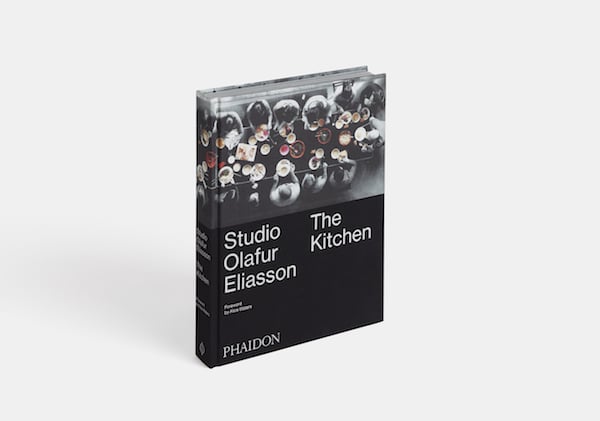
Studio Olafur Eliasson, The Kitchen book jacket.
Would you say that vegetarian food triggers creativity, too, because it poses a specific limitation?
It seems to me that since in 1980s, and particularly in the last 15 years, cooking itself has become much bigger and much more conscious. The general interest in cuisine grew thanks to figures like Wolfgang Puck, Gordon Ramsey, and Alain Ducasse, with whom I was in Paris just a couple of days ago. They were pioneers in reshaping how food was understood and appreciated by a larger scope of people, and paved the way for the more sensitive next generation.
I am gradually understanding and appreciating the broader perspective of this realm myself. I am an artist and my background is only at the periphery of cooking, but I was lucky to have very interesting people coming by the studio. The kitchen’s team is very ambitious and very early on spoke about Vandana Shiva and her Soil not Oil project, and I also met Alice Waters, the great chef [and organic food activist] from Berkley in San Francisco who has prefaced my book, who came to Berlin and brought other chefs to the studio.
There is a lot of caring involved in this venture. I call the cooks “caregivers” and the staff “caretakers,” because they take the care that the kitchen is giving. It is a lovely exchange of care, which also involves our deliverers from suppliers [from farmer associations and organic collectives based just outside Berlin]. Eating is something more than just eating—it’s about the consequences attached to it, for example, of choosing small suppliers instead of industrial farmers.
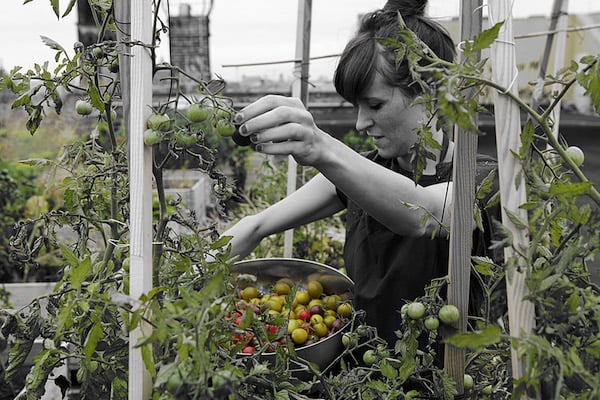
Harvesting tomatoes from the studio rooftop garden. Photo: María del Pilar García Ayensa © Studio Olafur Eliasson.
There’s a number of themes underpinning both your visual arts work and The Kitchen project: ideas of accessibility, communities, distribution of resources, ecologies… How do food and art relate in your view?
I think you could say that the industrialized food production market could be compared to the art market, but not the art world, which is a different thing, in my view.
Also, I think you could say that museums operate on certain levels like kitchen laboratories. Museums play an ethical role in culture, which is very beneficial for society. Museums like Tate here in London become forums to renegotiate reality. A museum is not just a house for art, it is a house that uses art to engage communities.
Another similarity is that they are both languages. I have learnt to use art to express myself, art is my language, but I am a lousy cook, which is why I don’t say anything with particular precision when I cook. To be a great cook you have to learn the language, but you also have to have something to say with it, like with art.
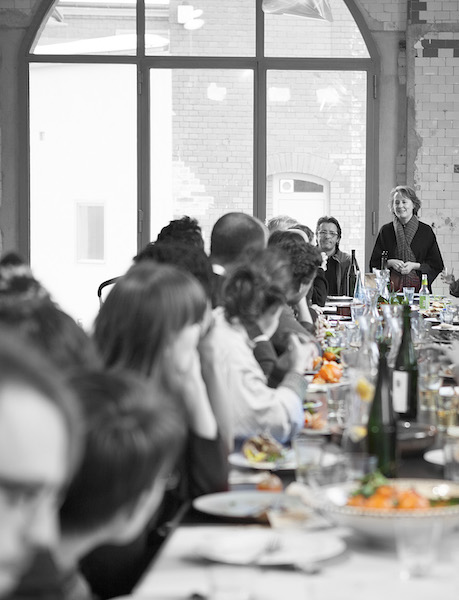
Chef Alice Waters and Olafur Eliasson at the studio table. Photo: María del Pilar García Ayensa © Studio Olafur Eliasson.
Culinary aspects have been present in contemporary art since at least the beginning of the 20th century. The majority of visual artists using food in their work or that have created cook books, however, tend to be men (for example the Futurists, Salvador Dalí, Gordon Matta-Clark, Rirkrit Tiravanija, Subodh Gupta…). Coincidentally, most famous chefs in the world also tend to be men. Why do you think that is?
That is a good question and I think it’s worth bringing that up. First of all, though, I have to say that my two favorite chefs are woman: My sister [Victoria Eliasdóttir] and Alice Waters. But having said that, yes, what you say is true, and it is a complex issue. Whatever I say might sound sexist, which is precisely what I want to avoid, but I could see how, perhaps, if a female artist cooked, it could be seen as consolidating a predictable archetype. But saying this is somehow counterproductive, anyway.
I think it’s not just a gender-based issued though. The cooking world is also quite xenophobic. You have very few black chefs, for example. Hopefully this is changing, as hopefully the traditional behavior in the kitchen is also changing, whereby everyone treats each other badly. Expertise in cooking has reached such extremes that you can now identify whether things taste worse depending on whether the tone in the kitchen was inclusive and appreciative or not, and they are also implementing stress management techniques. Kitchens are catching up with the values of societies.
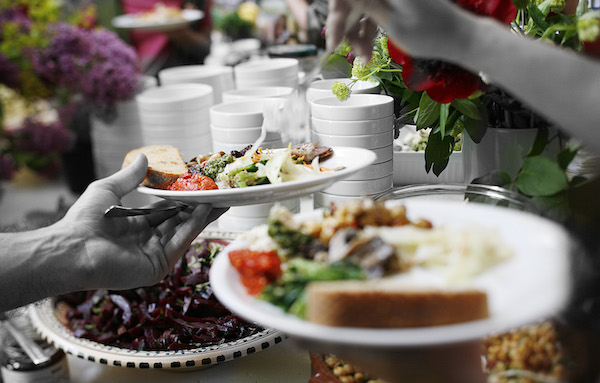
Life is Space, 2008. Photo: Marie Sjøvold © Studio Olafur Eliasson.
Where does your interest in food come from? I’ve read both your dad and sister are professional cooks.
I come from a maritime background. My father [artist and cook Elías Hjörleifsson, who died in 2001] was a chef on a fishing boat, and he always said that on a boat nobody dares to be mad at the cook. In the hierarchy of a boat, the cook goes first, even before the captain, because if you are friends with the cook, you can get bits of food on the side. The greatest success of my father, besides giving birth to my sister Victoria, who became a chef like him, was to make the fishermen—who for obvious reasons, after spending the whole day with these slimy creatures would much rather eat pork—eat fish and enjoy it.
The kitchen is a kind gift that you make to your studio workers, and for the guests you invite there, but have you ever considered opening it to the public in some shape or form?
We already host events and cook for other people to a certain level, and I do have to give credit to my kitchen team here because they do many projects without my involvement. They are now working with Syrian women, for example. We are going to have Syrian cooks come to the kitchen and get acquainted with it, and if it all goes well, they’ll do a day of cooking for the studio. If that goes well too, we will then host a Syrian dinner evening in collaboration with the organization Mother’s Mother. We are also going to have a fermentation workshop, as I am having a show in Korea in the fall. There’s always something going on…
I have to say I have suggested to the team doing a sort of open canteen on a number of occasions operating on a semi-public level, but I have to say that didn’t not go down so well… [laughs]. But maybe the exposure the book is giving them will make them reconsider…. My sister [who cooked at the studio kitchen for six months in 2014] now has a restaurant in Berlin called Dóttir, which has become very hip and trendy, and she is so ambitious that she wouldn’t hesitate! But we are like a family at the studio, it’s like home cooking, and not always fancy. We have periods in which we have beet salad for days, because it is very cheap to buy a lot of beets [laughs].
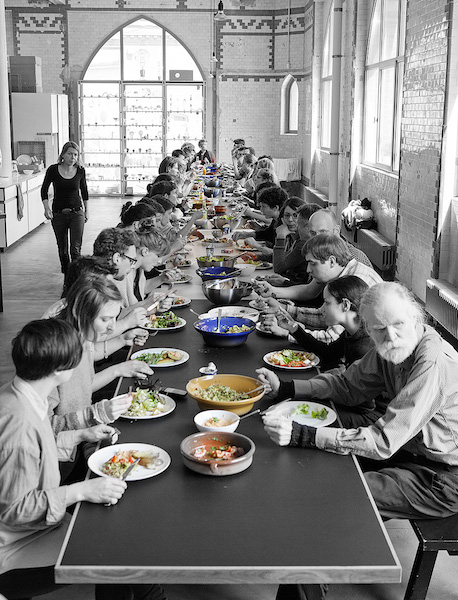
Lunch at Studio Olafur Eliasson. Photo: María del Pilar García Ayensa © Studio Olafur Eliasson.
Your show at the Palace of Versailles will open in a month. What can you tell us about it? I’ve read it’s going to involve a big fountain?
Well, is not just a big fountain, it’s going to be the tallest fountain in Europe! It’s more like a waterfall, actually. The exhibition will feature a few large-scale outdoor works, some garden interventions involving beautiful rock dust from Greenland, and a series of works installed indoors, although the fountain will be the centerpiece.
How tall will this fountain be?
That is a question that I will not answer cause then you will just write that! We need to give the readers the opportunity of being imaginative and never give quantifiable answers, so I never talk about the size of my works in that way.
Do you feel any sense of trepidation in light of the protracted controversy that plagued Anish Kapoor’s Versailles outing?
I trust the judgment of Anish, and I respect him immensely as an artist. I think culture shouldn’t be intimidated by discussions between different voices, and I think Anish never showed any signs of being worried about it. I am not worried about it, and I am also proud of having a show in France just before the elections, even though my show has nothing to do with it specifically!